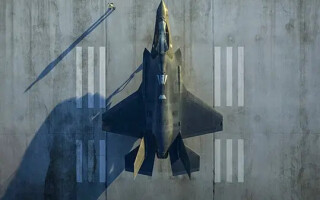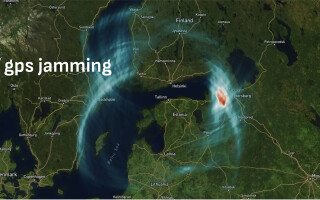RF and microwave technology enabling multimission unmanned systems
StoryApril 17, 2017
The different roles that unmanned aerial systems (UASs) play - whether used for intelligence, surveillance, and reconnaissance (ISR), search-and-rescue missions, or photography - are prompting engineers to design more RF and microwave content into these systems to meet all the Department of Defense (DoD) as well as civilian requirements.
Increased intelligence, surveillance, and reconnaissance (ISR) demands don’t come without engineering challenge. Today’s ISR payload designers face challenges that range from boosting the digital domain to handling the electromagnetic spectrum. Radio-frequency (RF) and microwave technology play a large part in enabling and meeting those diverse requirements.
“We’re seeing a lot of increased radio-frequency microwave (RFMW) content across the entire [UAS] market space, which includes everything from the upper-end copters though military systems, including those with global range and global endurance,” says Sean D’Arcy, strategic marketing, Aerospace and Defense, at Analog Devices in Chelmsford, Massachusetts. “This ranges from a high-end quadcopter that may be used for law enforcement all the way up to something like a Global Hawk. Both military and civilian applications are experiencing growing needs in this area.”
Sanjay Parthasarathy, senior vice president of strategy at Cobham Advanced Electronic Solutions in Washington, is also seeing an increase in UAS RF content. The increase “is trending higher primarily because of three things: communications, surveillance, and effects. There’s more need for autonomy, more need for sensors – the RF and millimeter wave sensors – together with more frequency agility. Of course, longer persistence and survivability is critical to today’s [UAS] applications,” he says.
Military program managers also want more dynamic range from their RF and microwave systems. “Receivers need to acquire a wide range of signals from very low to very high power levels in the presence of intentional and unintentional interfering signals,” says Mark Faulkner, chief technologist, RF and Microwave Systems, at Mercury Systems in Los Angeles. “At the front end, what limits your dynamic range is typically the mixer; the higher the linearity of your mixer, the better. There’s always folks working on that problem; it’s one of the fundamental limitations to our systems. We have ways to get to 40 dBm [decibels per milliwatt], but at the cost of high LO [local oscillator] drive and DC power.”
For example, says Faulkner, “Let’s say in the [UAS], the RF has to process very high data rates – we’re looking at several things going across the channel right now. You have to run real-time video from your [UAS], probably GPS data, potentially a [communications] link, telemetry, and the ability to redirect assets. All of this places demands on the data rates and the RF links. You have to actually design systems that can handle that new capacity.”
Interestingly enough, the UAS challenges of the near future “may not be so much on the analog side, directly,” D’Arcy says. “What I see as the biggest challenge, and what I deal with a lot, is what to do with all the data that we can either pull out of, or put into, the analog side of the signal chain. We are at risk of over-driving the digital side.”
Digital domain
The overload of information that a UAS needs to process has a direct effect on how these systems are being designed. In fact, some designers are saying that the RF content is not increasing: “My assessment is that RF content is decreasing,” Faulkner says. “The reason I say that is because the digital domain is getting faster and faster. It’s actually going to replace some of the RF functions, and it already has in some cases,” Faulkner says. “A/D [analog-to-digital] converters are becoming so fast right now that we can already get rid of the second frequency conversion in our heterodyne dual-conversion downconverters. Just replace the second conversion with digital signal processing. We are moving these A/Ds closer to the antennae aperture as the speeds increase. I see that trend continuing.”
The change comes in response to the increased load on the digital domain and the understanding that engineers need to take into account those digital constraints, D’Arcy says. “This will range from things like the JESD204 [serial-interface] standards to designs that may have to feed multiple paths and multiple points in the digital-processing chain. Historically, the people on the digital side and the programmers and the software engineers had to take exactly what was given to them from the analog side. Now we’ve become sophisticated enough that we can actually design the analog side with what the digital mission had in mind to begin with.”
The emphasis on the digital side has pushed engineers to design differently. Along with new design methods come new challenges to solve. “Looking out as far as three years from now, because these A/Ds are now handling a lot of the RF and analog signal processing, it creates a bottleneck further downstream,” Faulkner says. “If you have an AESA [active electronically-scanned array] radar on a [UAS], and now you have 100 low-power A/Ds, one behind each AESA element, you have to be able to process 100 individual 100 GSPS [gigasamples per second] lines with low latency. That’s going to be the next challenge – more in the digital domain but it’s driven by this trend of A/Ds moving closer to the aperture.”
Electromagnetic spectrum
The digital side is not the only obstacle or design challenge within the UAS RF and microwave world. “There can be a lot of increased competition and interference across the RF and microwave spectrum, which could be radar applications or radios,” D’Arcy says. “Primarily, we have some limitations in frequencies and frequency allocations,” he adds. “There are some contentions in those spaces. There’s a lot of geometry that is very specific to payloads and also some stabilization that’s inherent in the airborne systems themselves.”
For example, “You’re using [UASs] to perform some long-endurance ISR that you may see in the military space,” he explains. “You have a situation where you’re trying to cover and monitor these large swaths of the spectrum. You’re trying to pull out very specific signatures and profiles, both in real time and then in post-processing. This is becoming, as the use of the RF and microwave spectrum expands, an even more complex challenge. This occurs in the ISR space, not just in the military, but you’re also starting to see this in law enforcement as well.
“Aside from things that you may communicate – along with the command and control of the beast itself or the bird itself – you’re actually looking at how you send critical data back to the ground,” D’Arcy says.
The different roles of UASs
The demand for unmanned systems to play different roles, whether military or civilian, has forced engineers to look at various aspects. These include modularity, which can mean that “the requirements often want to go through a respin without changing the base-level hardware,” Faulkner says. “If you can make something modular and configurable, such that you can enhance its functionality later, maybe through software, that’s another key challenge that we’re facing these days.”
Designers have to figure out where RF and microwave content belong in the UAS scheme, Parthasarathy says. “In the end, where is this going? If you look at it from the perspective of what unmanned systems eventually want us to do, I think there are several drivers. One is the whole idea of autonomy. The second one is manned and teaming. Think about words that are used, like swarming or man/unmanned teaming. The problem really is how to accomplish multiple missions – so the demands are similar to those of communications customers: a wider frequency range, more agility, directed links, and protected communications.
“On the surveillance side, of course radar is a big thing,” he continues. “Both in the sense-and-avoid perspective to ensure safety and operations, especially operating in national airspace, but also from a perspective of sense in synthetic aperture radars (SARs) and imagery radars. What users are looking for in our technologies for surveillance is technology that enables us to span various bands. Finally, on the effects side, it’s all about more autonomy, the sense of communications enablement.”
Figure 1: The Analog Devices HMC 1099 power amp addresses range and power-consumption require-ments. Photo courtesy of Analog Devices.
(Click graphic to zoom by 1.9x)
Analog Devices’ HMC 1099 power amplifier (Figure 1) addresses some of these challenges. “The HMC 1099 is a 10-watt, gallium-nitride (GaN) power amplifier, in about the one to 10 gigahertz range,” D’Arcy explains. “It provides a wide instantaneous bandwidth, but also has a really low power consumption. It is designed for applications such as radio, communication systems, phased arrays. It could be either in the radar space or it could be in the phased antenna space.”
Sidebar 1
(Click graphic to zoom)
Sidebar 2
(Click graphic to zoom by 3.0x)








